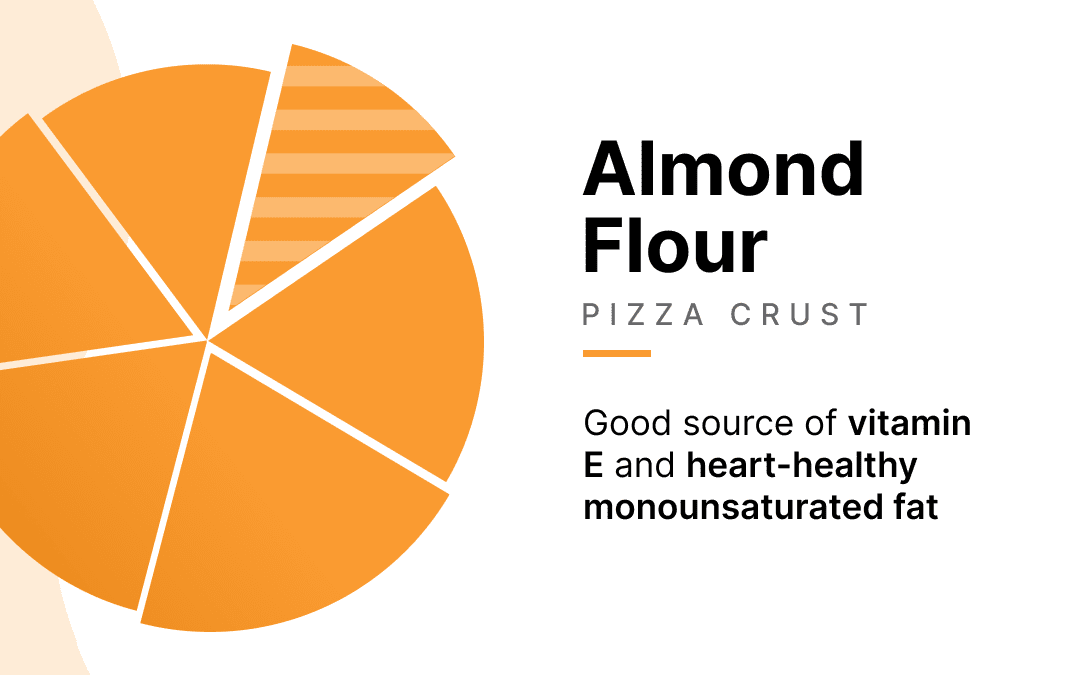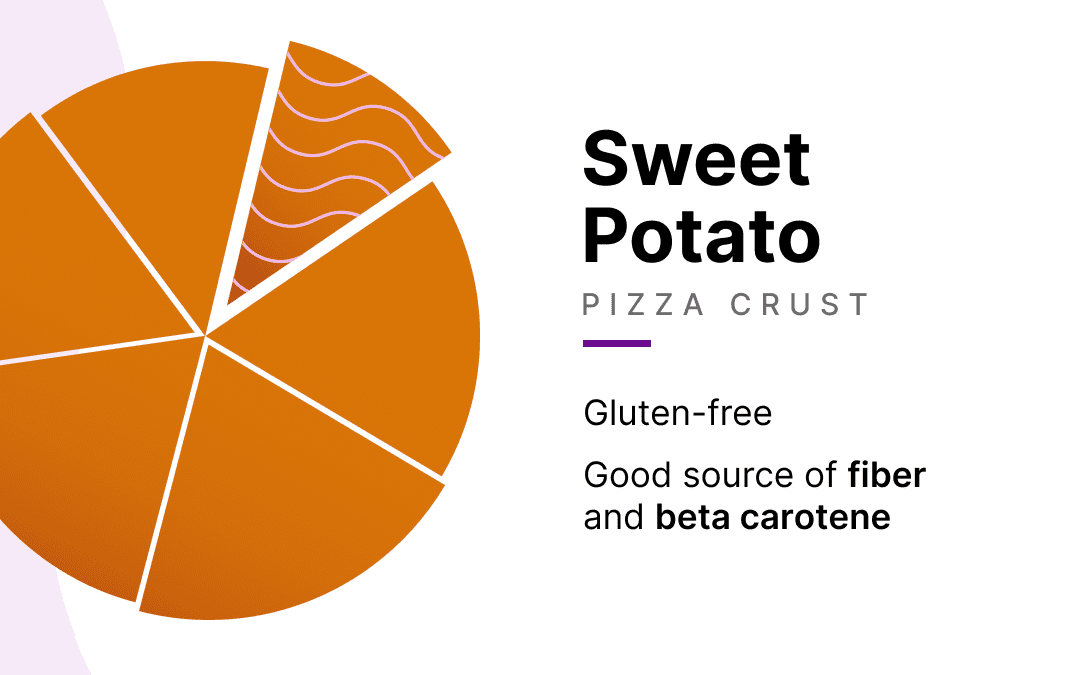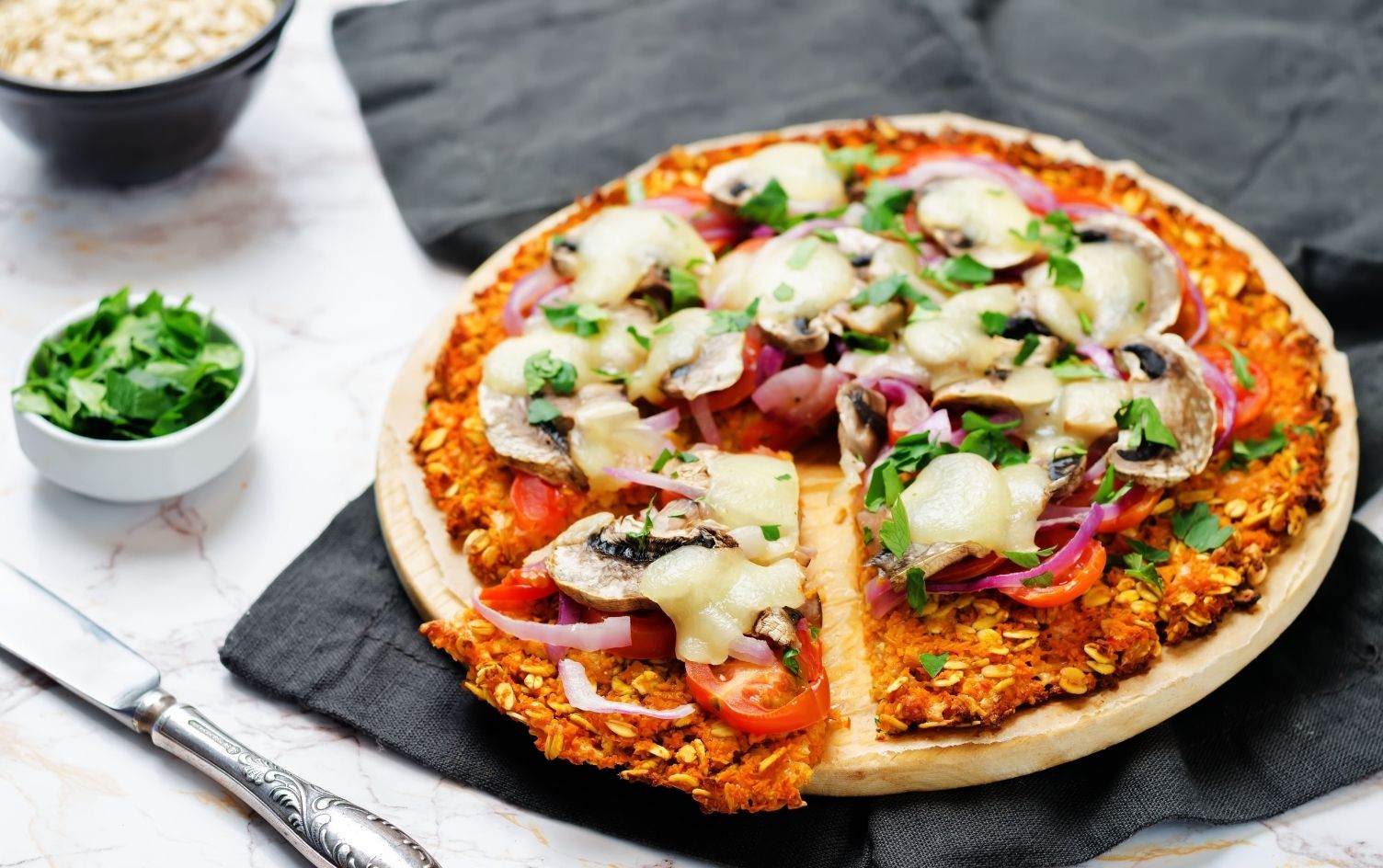The days when there was just one choice for pizza crust are long over. Now, it’s easy to feel overwhelmed by options when perusing the menu at your local pizza joint, the frozen food section, or the vast index of recipes (and opinions!) on the internet and social media. Breaking your decision down into a few steps, depending on your health goals, personal preference and tolerance, can be helpful. Knowing that some choices aren’t “bad” or “good” morally can be even more helpful, as well as keeping the end goal of enjoying your pizza stress-free in mind. Here are a few popular alternatives to pizza crust and the nitty-gritty on their nutrition and nourishment, as well as a breakdown of the old standby (regular old wheat crust!) for comparison.

Probably the most popular alt crust, cauliflower pizza crust can be made from scratch using a head of cauliflower or purchased premade and frozen. Some pizza shops also offer cauliflower crust pizzas. One of the obvious benefits of cauliflower crust pizza is the nutrition factor — it’s an automatic extra veggie serving (or two) in your day. Cauliflower is rich in antioxidants and the sulfur-rich compound sulforaphane, which may have protective effects against cancer. Cauliflower is also a good source of fiber, potassium, folate and vitamin C. With store-bought versions, some of these nutrients are likely lost during processing. One of the most popular frozen crusts, Caulipower, is fairly low in protein, fiber, vitamins and minerals, but it is gluten-free and may be better tolerated in those with celiac disease and sensitivities.

Flour made from chickpeas is gaining in popularity as a pizza crust ingredient. Like cauliflower, it is gluten-free and a nice alternative to wheat flour for those with gluten sensitivities. Chickpea flour is also high in protein, with about 20 grams per cup, and fiber, about 10 grams per cup, making it a satiating option that can help stabilize blood sugar and keep you full after a meal. Chickpea flour is also an excellent source of folate, iron and manganese. Pizza crust made from chickpeas is typically thinner and more crispy than wheat crust, and it is fairly easy to make. A new frozen chickpea pizza crust from Banza contains 4 grams of protein and 3 grams of fiber per slice.

Almond flour is made from finely ground blanched almonds, and can be used as a low-carbohydrate pizza crust alternative. Since it does not contain gluten, pizza crust made from almond flour will also be thin and crispy, as opposed to the thick chewiness traditional crust. Almond flour is also nutrient-dense, containing 14 grams of fat per cup (most of which is heart-healthy monounsaturated fat), 6 grams of protein and 3 grams of fiber. It’s also a great source of vitamin E, a potent antioxidant that protects our cells from damage. A popular almond flour pizza crust mix from Simple Mills is somewhat low in protein (3g per slice), fiber (2g per slice), but it does contain 6 grams of healthy fats per slice.
CLICK TO TWEET THIS ARTICLE > A dietitian’s guide to alternative pizza crusts, via @myfitnesspal #myfitnesspal

Yes, it is possible to make pizza crust from sweet potatoes! Recipes typically include mashed sweet potatoes, a flour, like almond or ground oats, and an egg. Sweet potatoes are a great source of fiber and beta carotene, which the body converts to vitamin A and is important for cell growth, immunity and vision, to name a few. Like the other alt crusts mentioned, a crust made with sweet potatoes would be gluten-free as long as no wheat flour is added. It is a good option for those with gluten sensitivities. This type of crust is typically low in protein, but that can be remedied by adding protein-rich toppings like cheese, pre-cooked chicken or even an egg.

Many believe there’s no real substitute for the OG pizza crust, which (thanks to gluten) rises during the baking process and produces a thicker, chewy crust. Whole-wheat flour pizza crust contains slightly more fiber than white, and about 13 grams of protein per cup versus 16. It is not completely lacking in other nutrients, despite how vilified it may be in certain “low-carb” diet crazes, and is a good source of B vitamins. A great way to add nutrients to any of these crust options is to pile on the veggies when making them at home. We love adding broccoli, chopped spinach, bell peppers and tomatoes.
THE BOTTOM LINE
One thing is certain: We are not lacking in alternative pizza crusts. The most important thing to keep in mind when choosing which crust to use is what you like and what sounds good to you. That may change from time to time, and that’s OK. You can crave a doughy, chewy wheat flour pizza one day and the next week want something crunchy made from cauliflower. The best thing here is allowing yourself to have these options, and knowing both can fit into a healthy eating pattern.
Ready to take the next step? Unlock MyFitnessPal Premium to access custom goal settings, quick-log recipes, and guided plans from a registered dietitian. Premium users are 65% more likely to reach their weight loss goals!




